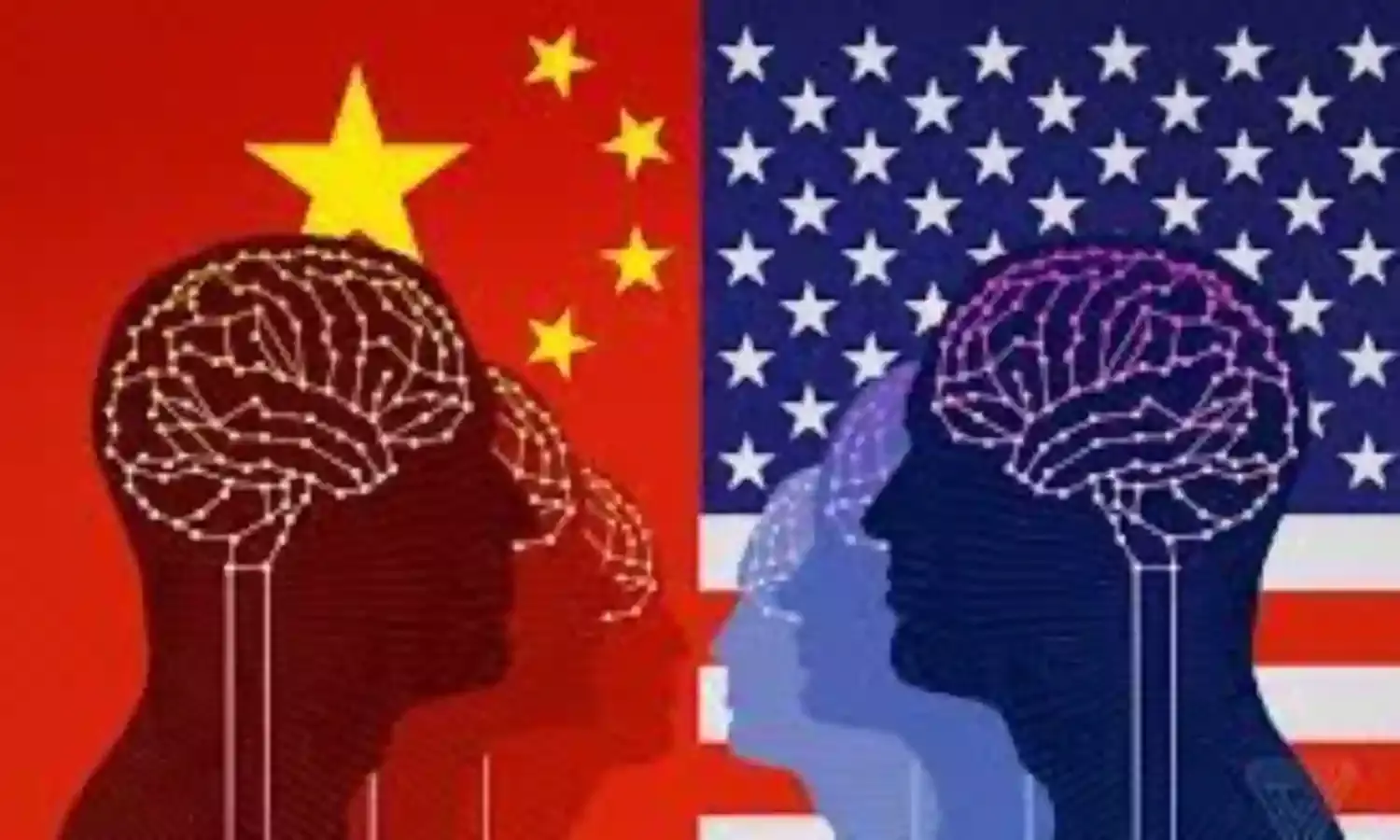Artificial Intelligence- India Should Keep Out of US War Games with China
Technology is moving at a speed faster than Delhi- Washington debating rooms

The inaugural meeting of the US-India initiative on Critical and Emerging Technologies (iCET) at the White House on January 31 has translated into action the announcement made by PM Modi and President Joe Biden during their meeting in Tokyo in May last year. It marks the triumph of hope over experience.
Technology is moving at a faster speed than the debating schedule of the bureaucracies in Washington and New Delhi. India could barely catch up with the first phase of the digital revolution and simply cannot afford to miss the next big phase — that of Artificial Intelligence (AI), a technology with seamless economic and military potential that is experiencing explosive growth, albeit with just two protagonists leading it, the US and China. China’s Origin Quantum announced last week that it delivered a commercial 24-qubit quantum computer for the first time.
Powered By
India’s partnership is limited to the US. It is far from certain that our chosen partner will eventually be the winner. Isn’t it premature and overly optimistic that India hopes to make its manufacturing ambitions a reality by relying exclusively on US tech companies?
Shouldn’t India pay attention to make itself an attractive investment destination for companies from other Asian countries, including China? It becomes a lot more risky and arduous that India shuts its door to Chinese manufacturing giants and puts all eggs in the western basket when Asian brands are on the rise and have gained growing market share not only in Asia, but also in the US, Europe and elsewhere. Asia represents a S10-trillion market opportunity.
India should not get sucked into the US’ technology war with China. There will be consequences. A recent German government study on large European AI models argues that unless the European Union can develop its own technology, it may only end up as dependent on the US, and that would inevitably mean dependence on a lower standard of data protection.
The US is dominating the global market for cloud covers, which has created problems with India’s data protection standards. The Asia Internet Coalition, an industry group that represents Meta, Amazon, Twitter, Google and other US big tech companies, has expressed dissatisfaction with the digital competition law recommended by the Indian Parliamentary Standing Committee on Finance in December, arguing that it is ‘regressive’ and ‘may dampen digital innovation in India’.
The Wall Street Journal reported last month that the backlash from the US tech companies is a warning that the standoff between Indian and US tech companies will intensify this year as New Delhi steps up regulation for the world’s second most populous Internet market.
The US technology giants such as Google, Amazon, and Meta are aggressively cornering their international market share and harvesting global data dividends, while promoting the rapid development of the US digital economy and the US’ digital hegemony.
In such a climate, it is only natural that India seeks to step up its market regulation to secure national security, economic interests and consumer privacy in trans-border data transactions. But when it comes to AI, be prepared that where domestic capacity is lacking, India risks losing its regulatory powers.
The White House Fact Sheet on iCET meeting says, ‘The United States and India affirm that the ways in which technology is designed, developed, governed, and used should be shaped by our shared democratic values and respect for universal human rights. We are committed to fostering an open, accessible, and secure technology ecosystem, based on mutual trust and confidence, that will reinforce our democratic values and democratic institutions.’
The iCET initiative aims to expand cooperation in defence, semiconductors, space, rare-earth processing technologies and other high-tech sectors. An intimate intertwining is expected. Conceivably, India’s motivation lies in seeking advanced technology and attracting funding from the US to achieve its accelerated development as well as in replacing China’s position in the global industrial and supply chains. For the US, it is principally about geopolitics.
Washington hopes to lock in New Delhi as part of its Indo-Pacific strategy of ‘friend-shoring’ to encircle China, and secondly, the US intends to leverage iCET to coax India to atrophy its relationship with Russia.
By its very nature, this is an unequal partnership — a bitter truth that the US’ close European allies are experiencing. How much technology the US will share, time only can tell, but Washington would have misgivings that India, too, like China, will eventually develop into another threat by virtue of its rapid development. India’s non-alignment and strategic autonomy create hiccups.
The Financial Times wrote recently that 2023 would ‘probably be the most consequential year in US-India diplomacy’. Washington regards India to be crucial to the advancement of its ambitions in the Asian region. But India should move cautiously so as not to aggravate its relations with China. Tensions are palpably rising. The iCET inaugural coincided with the NATO Secretary General Jens Stoltenberg’s Asian tour. At a joint news conference with Japanese PM Fumio Kishida, Stoltenberg said trans-Atlantic and Indo-Pacific security are ‘deeply interconnected.’
China has captured half the world in the supply of 5G equipment and the US cannot evict China. The same goes for China’s leadership in the production of AI equipment. Nikkei research flags China’s outsized presence in the global market, having garnered a bigger market share in 13 high-technology products and services, from electric vehicles to smartphones.
Equally, it’s not easy for US companies to move supply chains out of China and set up new factories and recruit skilled workers. China remains a massive lucrative market for many US tech companies, including Apple.



